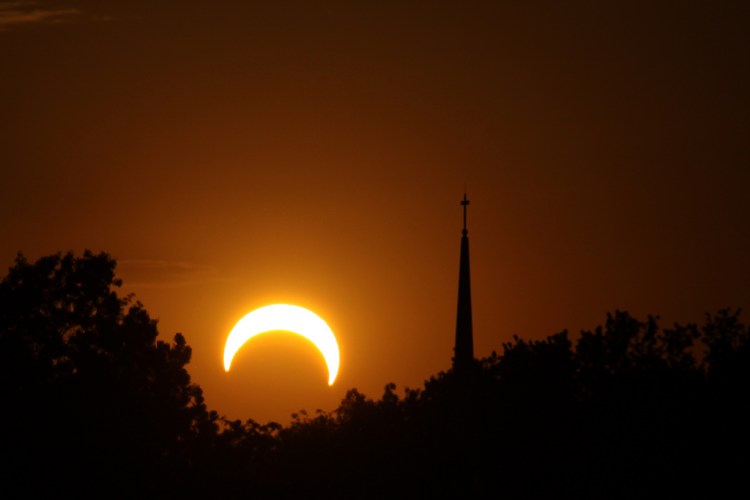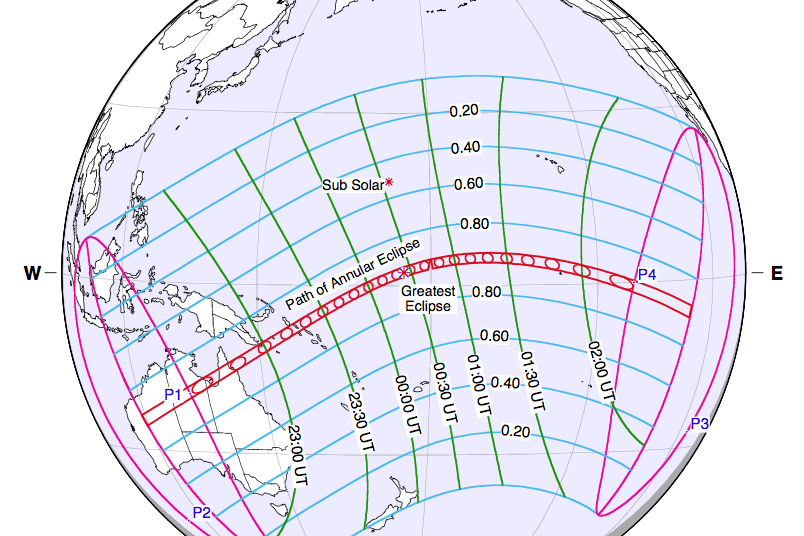 “Ring of fire” means different things to different people depending on whether they love Johnny Cash or buy Preparation H. But to solar astronomers, it means an annular eclipse.
“Ring of fire” means different things to different people depending on whether they love Johnny Cash or buy Preparation H. But to solar astronomers, it means an annular eclipse.
Which, of course, has nothing to do with years.
The moon will block out the sun this Thursday and Friday, May 9 and May 10, in what promises to be a spectacular ring of fire effect as the moon will appear to slip “inside” the sun and a bright circle of solar light — in geek-speak, annulus — shines all around it.
Those who wish to see the annular eclipse might want to pray for clear weather, but they’ll also have to be geographically blessed. The ring of fire effect will only be visible from parts down under, as NASA explains:
An annular eclipse will be visible from a 171 to 225 kilometer-wide track that traverses Australia, eastern Papua New Guinea, the Solomon Islands, and the Gilbert Islands. A partial eclipse is seen within the much broader path of the Moon’s penumbral shadow, which includes Australia, Indonesia, Oceania and much of the central the Pacific Ocean.
Here’s the path in visual form:
photo credit: matthileo via photopin cc; Hat tip: Space.com



